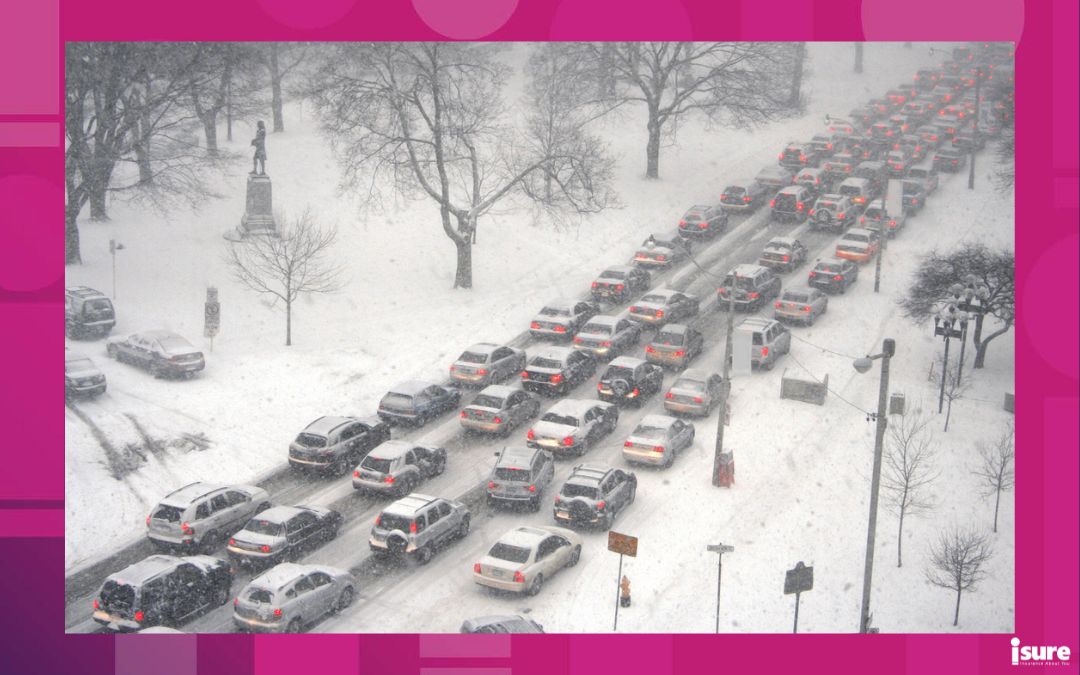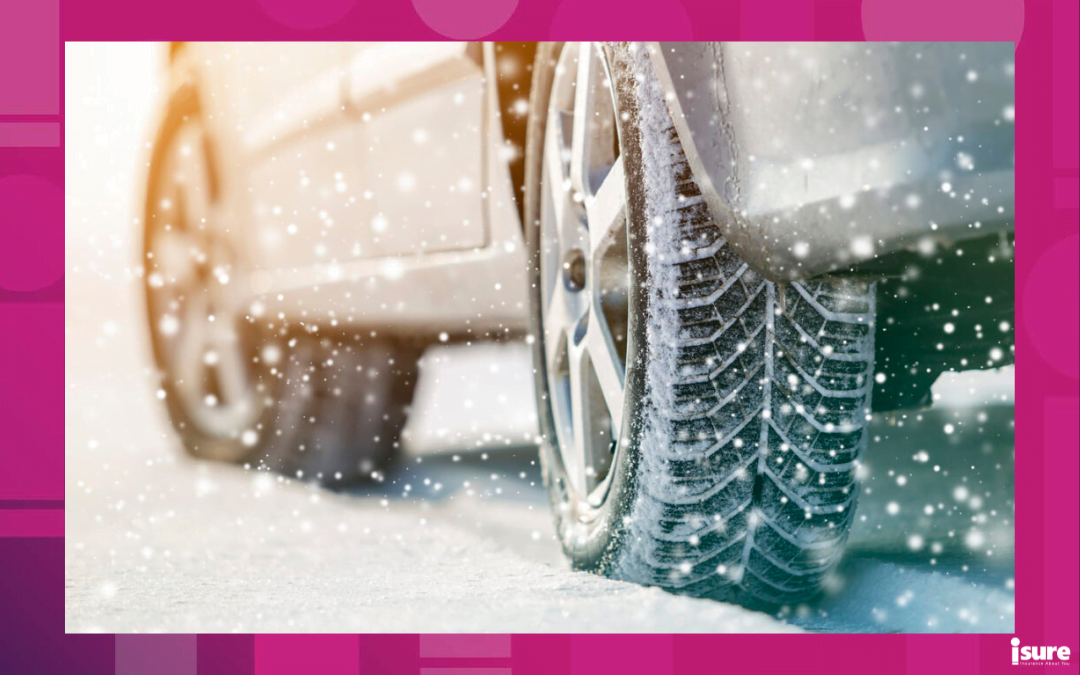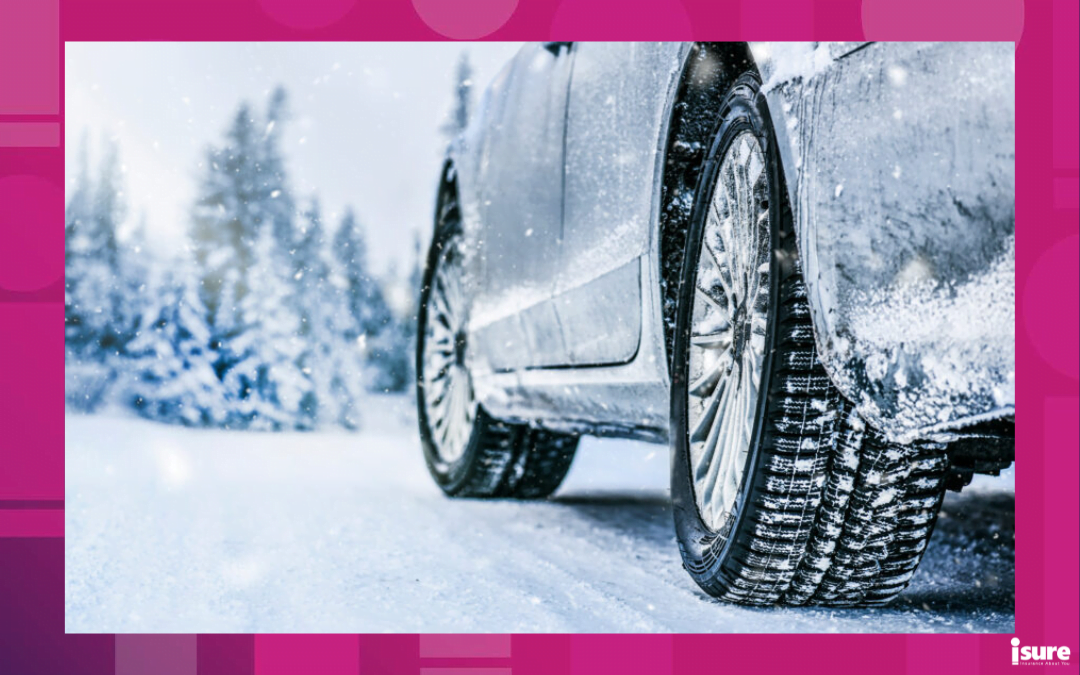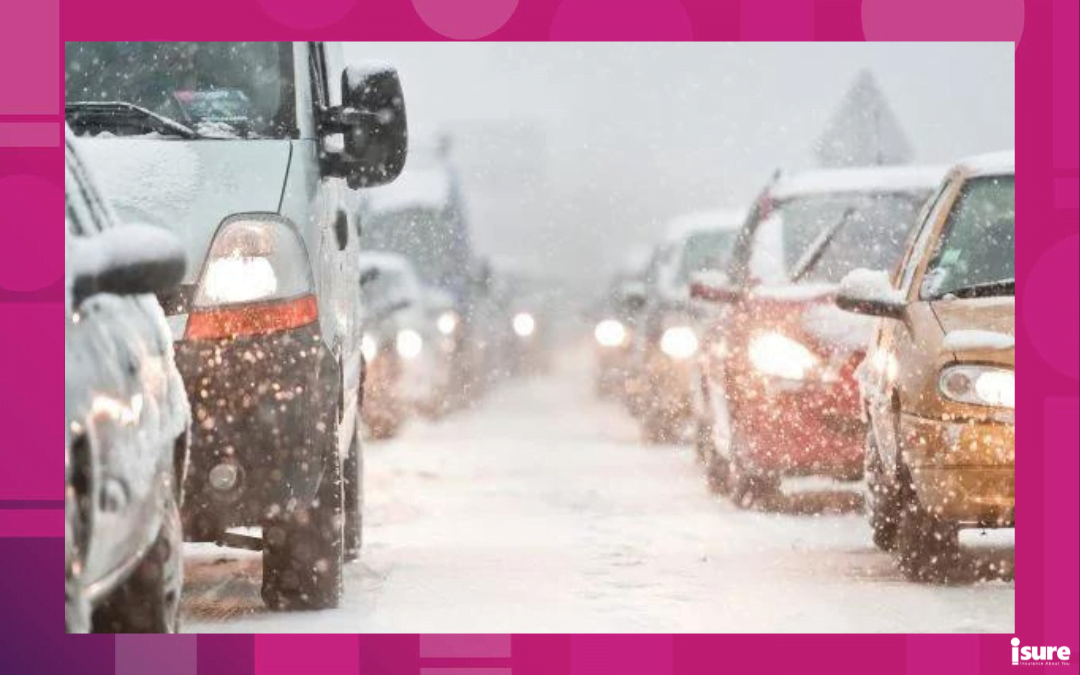No doubt driving in the winter can come with its fair share of stress and difficulty. With the first snowfall hitting Ontario recently, now is the best time to be prepared for what Mother Nature has to offer us this season. When it comes to driving in the wintertime, it is of utmost importance to keep yourself, your passengers, and other people on the road safe. If careless, driving in the winter can be extremely dangerous! People make many mistakes that, when avoided, can ensure you and your fellow drivers are safe and sound. Luckily, isure has everything you need to know when it comes to staying safe on the road this winter. Here are some of the most common driving winter driving mistakes.
1. Not getting winter tires
One of the most common mistakes made in the winter also just so happens to be one of the most avoidable. This is failing to install winter tires. Many people are under the assumption that their all-season round tires will suffice, however this is not always the case. Many Canadian provinces hit -10 degrees Celsius in the winter. These icy temperatures are sometimes too cold for all-season tires, which means winter tires are the safer option.
Winter tires are designed specifically for the cold, slippery season. They have a grippy tread that allows you to safely drive on the icy roads that Ontario provides during the colder months. It is also important to remember that in provinces, like Quebec and British Columbia, not having winter tires on your car by December 1st can result in a hefty fine of up to $300. Though not mandatory in Ontario, winter tires will provide you with the safety and traction you need to commute without harm. Additionally, you’ll receive a winter tire discount on your insurance, so be sure not make sure this winter driving mistake!
2. Warming up your car sufficiently
We get it, nobody likes to wake up in the cold mornings to defrost their car. However, doing so allows your driving experience to be much more safe. When most people wake up, they only do the minimum of scraping snow off their front windshield. However, this is dangerous. To be extremely safe, it is important to clear and defrost all of your windows. Remember, pouring hot water on your windshield to thaw it can result in a crack in the windshield and is not recommended.
In addition to clearing your windows, it is also important to clear your roof, as well. When driving on highways, this snow can fly off and land on the car behind you, causing a potential accident. Though it can be tedious, making sure your car is completely defrosted and clear of snow is a key step when it comes to commuting safely in the winter.
3. Dressing for the weather
This one may seem surprising to some, but one crucial winter driving mistake includes how you dress in the winter. Why? Because it can take a serious toll on your driving. Sure, your big puffer jacket may keep you toasty during the cold weather, but it is best to take it off when you enter the driver’s seat. Bulky jackets and big winter boots, as well as hats and gloves, can become a liability when you are behind the wheel.
This is because they can affect how you perform and possible reaction time. Big, chunky snow boots can affect the responsiveness of your brake and gas pedals. Furthermore, your boots can be wet and slippery from walking through the snow outside. To prevent this, it is a good idea to have a pair of sneakers set aside in your car specifically for driving. It is an extra step, but it can potentially save your life in rough, winter weather. On top of this, make sure your car is properly heated up so that you can remove your jacket and drive safely. Though a bulky jacket can make driving difficult, having cold hands can be just as disruptive, so have some gloves or mitts handy.
4. Not making yourself seen
It is important to always remember that if you can’t see other vehicles, there is a good chance they can’t see you, either. This is a dangerous situation to be in when behind the wheel. In instances such as this, it is important to turn your headlights and tail lights on to make sure you are seen by the drivers around you. This is crucial, even in the gloomy daytime!
Another good pointer to remember is to always use your turn signal when changing lanes or making a turn. If you need to send a message to the driver behind you, tap your brakes or flick your lights to inform them that they are traveling too close to you.
5. Following too closely to other drivers
Allowing for enough space between the vehicles in front of you and behind you is particularly important when it comes to icy, slick road conditions. Not doing so is one of the most common winter driving mistakes. Even with the best winter tires, it is important to give yourself enough stopping space and reaction time to avoid bumping the car in front of you.
During the winter months, it takes much longer to slow down and come to a complete stop. Additionally, it is more difficult to switch between lanes. It is never a good idea to tailgate people on the road, but this is especially important during winter. If you are driving too close to the vehicle in front of you, there is a good chance you are focusing on their bumper. This is not a good habit to pick up behind the wheel, as you should be paying attention to the road ahead, as well as your surroundings.
Rear-end collisions are some of the most common types of accidents that occur in the winter months, so it is also important to avoid any sudden stops, when possible.
6. Being unprepared — Expect the unexpected
When it comes to driving in the winter, it is always important to expect the unexpected. Sometimes, traffic can be brutal. Breaking down during below-freezing temperatures can be dangerous. This is why it is important to make sure you have isure’s winter safety kit handy! Items within it include, but are not limited to:
- Blankets
- Warm clothing
- Flashlight
- Shovel
- First-aid kit
- Phone charger
- Bottled water
- Jumper cables
- Snowbrush
7. Driving too fast or irresponsibly
When the roads are slippery, the last thing you want to do is drive at a fast speed in which you can’t slow down in time. Though you should be driving at a safe speed during any season, being careless and irresponsible during the winter months is a surefire way of getting into an accident. With this being said, your speed isn’t the only thing you’ll want to keep an eye on. Now more than ever, you want to ensure you are not distracted by items such as your phone, eating, or applying makeup. On top of this, you want to make sure you don’t have any rowdy passengers in the car with you. The last thing you need is a distraction when the roads aren’t in good condition. Careless and irresponsible driving is a huge contributor when it comes to accidents, even when the weather is good!
8. Being an inexperienced or novice driver
Unfortunately, if you are an inexperienced or novice driver, you may want to stay home during bad weather conditions. This is especially true if you are only at a G1 level of driving and need an experienced driver with you to get behind the wheel.
Bad weather conditions in the winter can make driving all the more difficult. When you don’t have the proper experience and are still learning the ways of the road, these weather conditions can create some serious hazards on the road. If it is your first winter driving, make sure you properly prepare your car and follow the safety tips mentioned in this article to help mitigate your driving risk.
9. Poor planning
Nowadays, the ability to check the weather ahead of time has become easier than ever. With numerous applications for your smartphone, as well as the classic television and radio weather forecasts, there is no excuse for not being properly prepared! Poor weather conditions mean it is probably not the best time for a winter road trip.
By planning trips ahead, you give yourself ample time to make sure your vehicle is ready and you are prepared to get behind the wheel in poor driving conditions. You can also plan your trips accordingly. If you see that the weather is going to be bad on a day you plan on visiting friends or going out to dinner, it is probably best to stay home. This will give you ample time to reschedule for a time when the weather isn’t as challenging!
10. Underestimating your vehicle’s capabilities
Figuring out if your car is prepared for the winter months is crucial! There is much more to it than just slapping on some winter tires. Unfortunately, underestimating the capability of your vehicle in the winter months is a mistake that is far too common. Making sure your vehicle has safety features, such as All-Wheel Drive, will ensure you are commuting safely and with ease. You should make sure you are stocked up with some car maintenance necessities, such as:
- Oil
- Coolant
- Car cables
- Window washer fluid
If your car has been facing issues in the warmer months, like stalling or poor battery life, you should most definitely get to the bottom of these issues in advance to stay safe and efficient in the winter. You will also want to make sure your heating system is working correctly. Getting behind the wheel of a car with no heat can make driving difficult and uncomfortable.
Stay home and off the roads, when possible
At the end of the day, one of the most dangerous things you can do is to get behind the wheel in bad weather when it is not necessary. Going out when you shouldn’t be is one of the biggest winter driving mistakes you can make. If you aren’t commuting to work or going to the store for necessities, it is important to ask yourself if it’s worth getting behind the wheel. No matter where you are going, it is just not worth putting yourself and others in harm’s way.
All in all, we hope our list above helps prevent you from making these common winter driving mistakes. Your safety both on and other the road is our biggest priority. Remember, having proper car insurance coverage in case of an accident is crucial in the winter months! Contact us or request a quote today!




